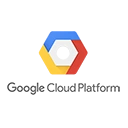Google Cloud Functions is a serverless compute service that allows you to automate tasks and respond to events. In this guide, we'll explore the basics of automating tasks with Google Cloud Functions and provide a sample code snippet to get you started.
Key Concepts
Before we dive into the code, let's cover some key concepts:
- Triggers: Triggers are events that initiate the execution of a function. They can be HTTP requests, Cloud Storage changes, Pub/Sub messages, and more.
- Runtime: The runtime is the environment in which your function runs. Google Cloud Functions supports multiple runtimes, including Node.js, Python, and more.
- Event Data: When a function is triggered, it receives event data, which contains information about the triggering event. The structure of event data varies depending on the trigger type.
Sample Code: Automating a Task with Google Cloud Functions
Here's a sample code snippet for automating a task using Google Cloud Functions in Node.js. In this example, we'll create a function that generates a thumbnail when an image is uploaded to a Cloud Storage bucket:
// Import the required modules
const { Storage } = require('@google-cloud/storage');
const { spawn } = require('child-process-promise');
// Initialize a Cloud Storage client
const storage = new Storage();
// Define the Cloud Function to generate a thumbnail
exports.generateThumbnail = async (data, context) => {
const file = storage.bucket(data.bucket).file(data.name);
const thumbnailFileName = `thumbnails/${data.name.split('/').pop()}`;
const thumbnailFile = storage.bucket(data.bucket).file(thumbnailFileName);
// Generate the thumbnail using an image processing tool (e.g., ImageMagick)
try {
await spawn('convert', [file.name, '-thumbnail', '200x200>', thumbnailFile.name]);
console.log('Thumbnail created successfully.');
} catch (error) {
console.error('Error generating thumbnail:', error);
}
};
Deploying the Function
Once you have created your function code, you can deploy it to Google Cloud Functions using the
gcloudConclusion
Google Cloud Functions provides a powerful platform for automating tasks and responding to events. Whether you're processing data, creating notifications, or executing custom logic, Cloud Functions can help you streamline your workflows and reduce manual efforts.

